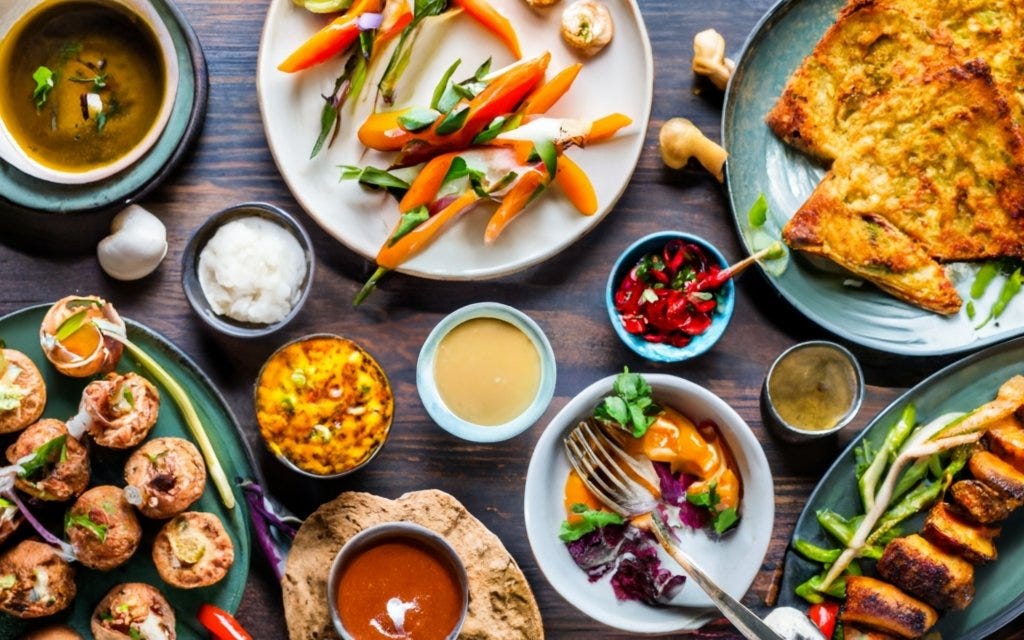When you hear the word cevurı, it might sound unfamiliar or mysterious. However, beneath its intriguing sound lies a rich history, a meaningful cultural connection, and a delightful experience for the senses. In this article, we’ll take a deep dive into what cevurı is, where it comes from, how it’s made, and why it deserves a place in your culinary vocabulary.
What is Cevurı?
At its core, cevurı refers to a traditional dish that hails from the rich and diverse cuisine of Central Asia and parts of the Middle East. While the exact origin is debated, most culinary historians agree that cevurı is a heritage food, passed down through generations. It combines hearty ingredients like grains, meat, and spices, cooked in a way that preserves both flavor and nutrients.
Cevurı is more than just food—it’s a symbol of togetherness, often served during communal gatherings, festive occasions, or shared family meals.
A Brief History of Cevurı
The roots of cevurı can be traced back to nomadic tribes who needed meals that were not only delicious but also practical. Traveling long distances with limited ingredients, these communities learned to make use of locally available food items like lentils, chickpeas, and dried meat.
Over time, the dish evolved, influenced by regional spices and cooking methods. In some areas, it resembles a stew, while in others, it takes the form of a baked or pan-fried dish. What remains constant, however, is its deeply satisfying taste and the comfort it brings to those who eat it.
The Cultural Significance of Cevurı
Food is often a reflection of culture, and cevurı is no exception. In many communities, preparing cevurı is a family affair. Grandparents, parents, and children come together in the kitchen, sharing stories while preparing the ingredients. The act of making cevurı becomes a ritual, a way to pass on traditions and keep memories alive.
In weddings, festivals, and religious holidays, cevurı often holds a place of honor at the table. It’s not just about feeding the stomach—it’s about feeding the soul.
Ingredients: Simple Yet Rich
One of the most charming aspects of cevurı is its simplicity. Traditional recipes often call for:
-
Chickpeas or lentils – for protein and texture
-
Bulgar or rice – as the base
-
Lamb, beef, or chicken – for richness
-
Onions and garlic – for aroma
-
Spices like cumin, turmeric, and coriander – to add depth
-
Olive oil or clarified butter – for that authentic taste
Despite using humble ingredients, cevurı delivers complex flavors. Every bite carries a bit of warmth, comfort, and history.
How to Make Cevurı at Home
Recreating cevurı in your kitchen is easier than you might think. Here’s a simplified version of the recipe:
Ingredients:
-
1 cup bulgur or rice
-
1 cup cooked chickpeas
-
300g minced lamb or beef
-
1 onion, finely chopped
-
2 cloves garlic, minced
-
1 tsp cumin
-
1 tsp paprika
-
Salt and pepper to taste
-
2 tbsp olive oil or butter
-
Fresh parsley for garnish
Instructions:
-
In a large skillet, heat the oil or butter.
-
Sauté the onions and garlic until golden.
-
Add the meat, cooking until browned.
-
Mix in the spices, salt, and pepper.
-
Stir in the chickpeas and bulgur or rice.
-
Add 2 cups of water and bring to a boil.
-
Reduce heat, cover, and simmer until the grains are fully cooked (about 20 minutes).
-
Fluff with a fork and garnish with fresh parsley before serving.
This dish pairs wonderfully with yogurt or a side of fresh salad.
Variations of Cevurı Around the World
Though cevurı is deeply rooted in Central Asia, its influence can be found in similar dishes across different cultures:
-
In Turkey, a dish called “keşkek” bears similarities.
-
In the Middle East, dishes like “mujaddara” and “koshari” share a common thread of grains and legumes.
-
In parts of Eastern Europe, barley and buckwheat-based dishes mimic cevurı’s hearty style.
Each version carries the unique flavor of its region, yet the soul of cevurı remains the same—comforting, nourishing, and communal.
Why You Should Try Cevurı
In a world increasingly filled with fast food and processed meals, cevurı is a reminder of the beauty of home-cooked, traditional cuisine. It is:
-
Nutritious – packed with fiber, protein, and essential nutrients
-
Affordable – uses pantry staples and budget-friendly ingredients
-
Versatile – can be adjusted for vegetarians, spice lovers, or specific dietary needs
-
Comforting – the kind of dish that warms you from the inside out
Trying cevurı is not just about tasting a new dish; it’s about experiencing a piece of another culture’s soul.
Cevurı in Modern Times
Thanks to the global rise in interest in world cuisines, cevurı is slowly gaining popularity beyond its native regions. Food bloggers, chefs, and cultural enthusiasts are rediscovering this ancient dish and adapting it for modern palates. Some are adding new twists like roasted vegetables, spicy sauces, or even serving it as a filling for wraps.
Its ability to adapt without losing its essence makes cevurı the perfect example of how food can evolve and still honor its origins.
Final Thoughts: Embrace the Tradition of Cevurı
Whether you’re a foodie, a home cook, or someone simply curious about the world, exploring cevurı offers something unique. It connects you to generations of tradition, brings people together, and reminds us that the best meals often come from humble beginnings.
So next time you’re looking to try something new—yet deeply meaningful—consider making cevurı. You’ll be surprised at how one dish can carry so much flavor, history, and heart.


